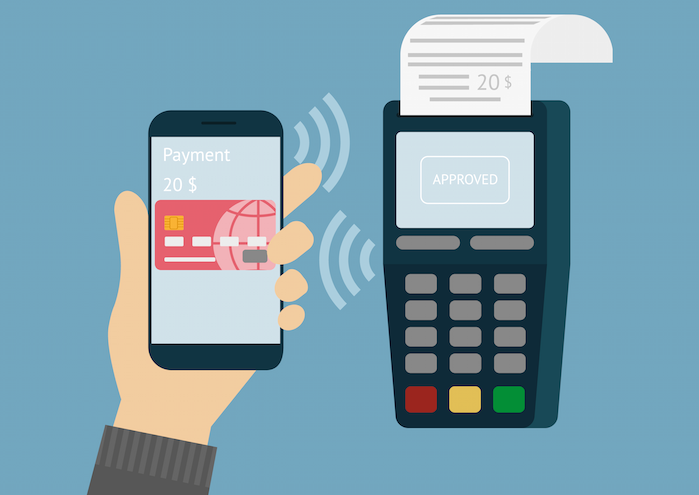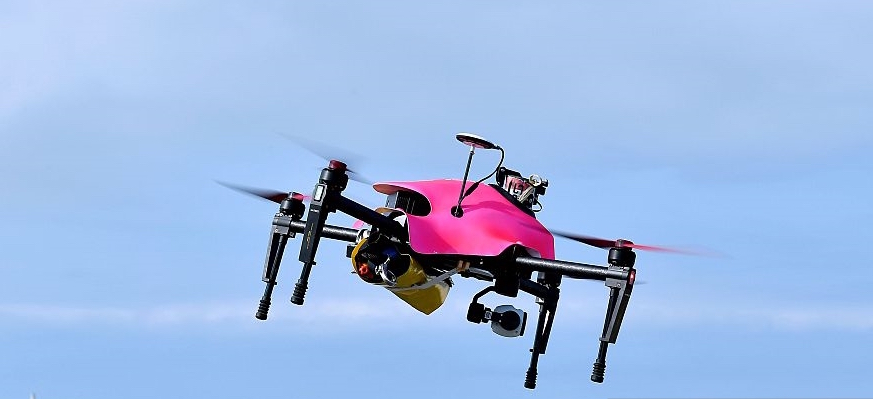In this Tech of the Week we have taken a closer look into mobile payment technologies and seen how this information good (mobile device) has innovated the way we pay. First of all we have shown the evolution of payment since the beginning of human existence. And conclude that today’s payment methods exist of either cash, credit or debit card or newly enabled the mobile device.
Paying with your mobile device is highly interesting since our society nowadays is carrying such a device around all day long, therefore it is actually quite straightforward to think of using it as a payment method as well. Recent technology innovations have made it possible to add this feature to your mobile device. With QR-codes and Near Field Communication (NFC) chips your mobile device is ready to exchange information and especially ready to exchange payment informations. In the movie we explain how these two technologies could work in your daily life. The QR-code is a readily available technology as this technology has already been used for more in-depth brand exposure (Soon, 2008). Consumers are directed to webpages, applications or other information-savvy materials. But what if you are in a restaurant, you ask for the bill, you scan the QR-code that is printed on the bill and voila the bill has been paid! No cash, no cards, no wallet needed. Just a mobile device with a camera (and an internet connection) and the transaction is fulfilled.
The NFC chip is probably also familiar, although you might never have heard of the name of the chip. Think of your debit or credit card, nowadays you can just put the card against the pin device and the transaction is completed. These chips are now built into many smartphones available on the market (Harrop, Das and Holland, 2014) making it possible to let your phone do what your credit or debit card can do. To have a transaction fulfilled with the NFC chip, both devices need to be equipped with NFC software and held within a maximum of 10 cm from each other.
In the video we have taken a closer look into both technologies and compared their strengths and weaknesses. We have identified four main areas; user interaction, costs, technology widespread and security.
User Interaction
As explained above, with the QR-code you have to scan the code, with NFC you have to “tap” your device near the NFC receptor. Both technologies work very differently and as from the user interaction it is clearly the NFC tech which is the easiest to use. We therefore attributed the first point to NFC.
Costs
Regarding the costs, the QR-code is clearly the winner. Generating a code requires few resources (a code can even be generated for free through the internet) and can be placed everywhere. As for NFC, a special chip needs to be developed and implemented in two different devices which includes high costs.
Technology widespread
The NFC technology is becoming more and more popular and Samsung or Apple starting to implement the chip in their phones. However, mainly due to the low costs, QR-codes are available everywhere and the technology already exists within all mobile devices with a camera.
Security
This time NFC is the clear winner, to fulfill a transaction the chip has to be brought into the connection range (10cm). While a QR-code as soon as it is generated can be scanned by anyone and thus exposing the customer’s payment details.
From the comparison, a clear winner cannot be found. However, we know now where the strengths and weaknesses of both technologies lie.
One certain conclusion that can be drawn is that cash and payment cards will disappear as these new technologies are taking over their share in the market.
References
Euromonitor International Blog. 2016. NFC – what is it and how can it help retailers? – Euromonitor International Blog. [ONLINE] Available at: http://blog.euromonitor.com/2011/04/nfc-what-is-it-and-how-can-it-help-retailers.html. [Accessed 09 October 2016].
Harrop P, Das R, Holland G 2014, IDTechEx. 2016. Near Field Communication (NFC) 2014-2024: IDTechEx. [ONLINE] Available at: http://www.idtechex.com/research/reports/near-field-communication-nfc-2014-2024-000363.asp?viewopt=contents. [Accessed 16 September 2016].
Soon T J 2008, “QR code.” Synthesis Journal 2008 (2008): 59-78.
Estateqrceodes, 2016 ‘Advantages and disadvantages of QR code’. [ONLINE] Available at: http://www.estateqrcodes.com/advantages-disadvantages.html[Accessed 16 September 2016].
Abdul, R 2015, ‘QR code advantages and disadvantages’. [ONLINE] Available at: http://www.robabdul.com/marketing/qr-code-advantages-and-disadvantages/ [Accessed 16 September 2016].
Ideal, 2015, ‘QR code’ [ONLINE] Available at: https://www.ideal.nl/ontvangen/aan-de-slag/qr-code/[Accessed 16 September 2016].



